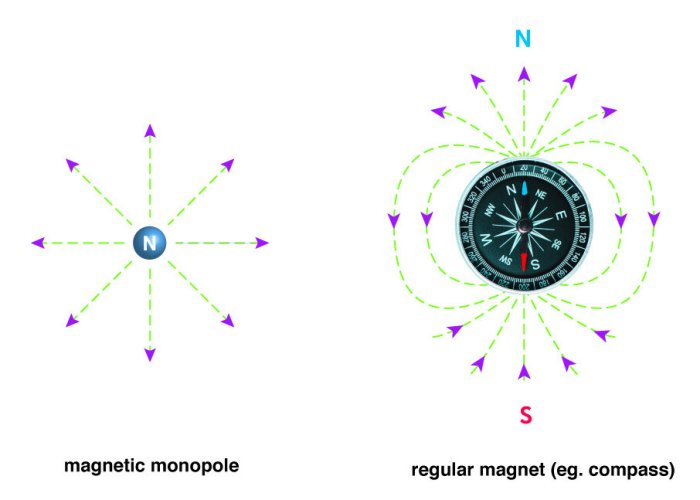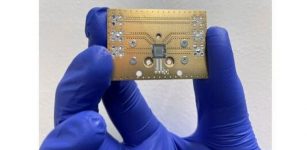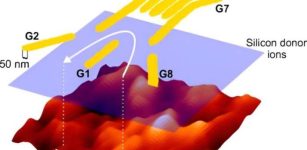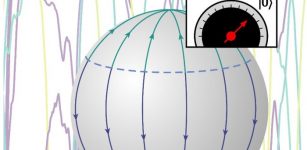Hunting For One-Pole Magnets By Combining Cosmic Rays And Particle Accelerators
Eddie Gonzales Jr. – MessageToEagle.com – Some of the world’s most powerful particle accelerators have helped researchers draw new leading limits on the existence of long theorized magnetic monopoles from the collisions of energetic cosmic rays bombarding the Earth’s atmosphere, reports a new study.
 Schematic illustration of magnetic compass, regular magnet and hypothetical magnetic monopole. Credit: Kavli IPMU
Schematic illustration of magnetic compass, regular magnet and hypothetical magnetic monopole. Credit: Kavli IPMU
Magnets are intimately familiar to everyone, with wide-ranging applications within daily life, from TVs and computers to kids toys. However, breaking any magnet, such as a navigation compass needle consisting of north and south poles in half, will result in just two smaller two-pole magnets. This mystery has eluded researchers for decades since 1931, when physicist Paul Dirac theorized the existence of one-pole “magnetic monopoles”—particles comparable to electrons but with a magnetic charge.
To explore whether magnetic monopoles exist, an international team of researchers, including the University of Tokyo’s Kavli Institute for the Physics and Mathematics of the Universe (Kavli IPMU) Fellow Volodymyr Takhistov, studied available data from a variety of terrestrial experiments and have carried out the most sensitive searches to date for monopoles over a broad range of possible masses. The researchers focused on an unusual source of monopoles—atmospheric collisions of cosmic rays that have been occurring for eons.
The interdisciplinary research required bringing together expertise from several distinct corners of science—including accelerator physics, neutrino interactions and cosmic rays.
Cosmic ray collisions with the atmosphere have already played a central role in advancing science, especially the exploration of ghostly neutrinos. This lead to Kavli IPMU Senior Fellow Takaaki Kajita’s 2015 Nobel Prize in Physics for the discovery by the Super-Kamiokande experiment that neutrinos oscillate in flight, implying that they have mass.
A schematic illustration of magnetic monopole (M) production from collisions of cosmic rays with the Earth’s atmosphere. Credit: Volodymyr Takhistov
Partially inspired by the results of Super-Kamiokande, the team set to work on monopoles. Particularly intriguing were light monopoles with masses around the electroweak scale, which can be readily accessible to conventional particle accelerators.
By carrying out simulations of cosmic ray collisions, analogously to particle collisions at the LHC at CERN, the researchers obtained a persistent beam of light monopoles raining down upon different terrestrial experiments.
This unique source of monopoles is especially interesting, as it is independent of any pre-existing monopoles such as those potentially left over as relics from the early universe, and covers a broad range of energies.
By re-analyzing data from a wide range of previous experimental monopole searches, the researchers identified novel limits on monopoles across a wide range of masses, including those beyond the reach of conventional collider monopole searches.
These results and source of monopoles studied by the researchers will serve as a useful benchmark for interpreting subsequent future monopole searches at terrestrial laboratories.
Details of their study were published in Physical Review Letters.
Written by Eddie Gonzales Jr. – MessageToEagle.com Staff











